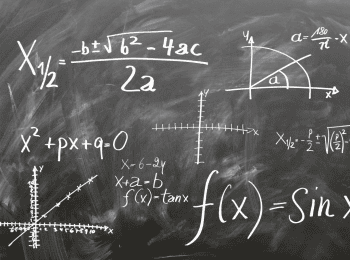What is Multivariate Normal Distribution in Calculus?
Normally, when you’re working in calculus and statistics, you’re dealing with a two-dimensional curve. You have a simple graph with points plotted on x and y coordinates. Functions are expressed in terms of x and y because you’re only working with two dimensions. Of course, in the real world (i.e., practical applications, you aren’t likely working in two dimensions.
Therefore, you have to have an addition. You’re working on the z-axis as well as the x- and y-axis. On a graph, this is plotted out by using another axis protruding perpendicularly to the other two, and while it can look confusing, you get used to it over time.
Multivariate functions, also called multivariable functions, show up in statistics and calculus primarily. You won’t see them much in something like trigonometry, but you’ll see them in various scientific fields. The most common place you’ll find these functions is in physics when calculating vectors. Vectors are lines or patterns of force that operate in three-dimensional space.
What is the Normal Distribution?
Before going into depth about what the multivariate normal distribution is, let’s talk about the univariate distribution.
In probability theory, which underlies a lot of statistics, you often hear about something called the bell curve. The bell curve is the most basic form and arguably the most important concept in all of statistics, calculus, and algebra.
Normal distribution of data simply means that, for any given set of data points, most of them are going to cluster around the median point, with fewer points existing at the upper and lower bounds of the function.
In other words, if you have a group of people categorized by various heights, more people’s height measurements are going to tend toward the average height of the sample You’ll only have a few outliers, In statistics, the term ‘outlier’ refers to any point of data that lies on one of the ends of the bell curve. In the example, it would refer to a very tall or very short person.
Several important measurements in statistics include:
The mean is more commonly referred to as the average, and it’s where most of your data will converge on any graph. To find the mean of a set of data, you take the sum of all the data values and divide by the number of values. If you had five data points with a total of 350, the mean would be 70. On a graph, you may not be able to plot this.
The median is the middle of the set of data. When arranged from lowest to highest, the median is the middle number if there is an odd number of data points. Otherwise, you would take the mean of the two middle values to get the median. This is also not easy to spot on a graph unless you have a discrete, bounded function when you would likely take an integral.
The mode is the point of data that occurs the most in a given sample. When plotted as a function, you’ll see it as a horizontal line segment.
The standard deviation, meanwhile, dictates the overall spread of the data. A sharper bell curve indicates that more data clusters near the median, while a smooth curve shows that data exists on a more even distribution across the x-axis.
Generally, the bell curve has a predictable percentage: Over 68 percent of data points will fall within 1 standard deviation of the mean. 95 percent of data will fall within 2 standard deviations, and up to 99.7 percent within 3 standard deviations.
Three-Dimensional Graphs
At first, it can seem difficult to graph and read graphs in three dimensions because you’re working on a two-dimensional sheet of paper or screen, but it gets easier. All you’re doing is adding an axis, and shifting the relative positions around. The x-axis, which holds the independent variable in many functions, runs “forward” and “backward” into the page.
The y-axis runs vertically as always. Meanwhile, the z-axis takes the former place of the x-axis. X and z can sometimes switch places, depending on the program you’re using or what is easier to read. If you have the liberty to do so, it may make more sense to have z be the new axis pointing out of the page.
Points on a three-dimensional graph are expressed as (x, y, z) just as they are in two-dimensional ones. A big difference is what happens when you have a single-variable constant like x = 2. Instead of a line, you now have to think of the solution as a plane.
For any function or system expressed in terms of f(x), you have to think of it as a line, curve, or enclosed shape. When you add the third dimension, it’s a solid form, or a set of points encompassed by a given plane passing through intercept points. To find intercepts, you set each variable in turn to zero and solve the equation.
Vectors
To understand what multivariate normal distribution is, you have to understand vectors. We mentioned vectors earlier as lines of force. This is the purely physics-oriented definition. In math, a vector has two properties: its magnitude and its direction. The magnitude of a vector on a graph is represented by the length of a line segment, starting from the origin point.
The direction of a vector is indicated by a line drawn from the origin point to a point given by the form R(t) = <f(t), g(t), h(t)>. Each of the components is a function on its own.
Therefore, you can easily determine a vector by taking its parts as a system. In calculus, you might have to express the vector in terms of time, which is why it’s written using the variable t as a function of each dimension. For example, if you’re graphing a curve, you might need to find out what the curve looks like between values of t = 1 and 3.
Vectors are often a function of time and force. In other words, you want to know how a force changes over time both in magnitude and direction. This is why you often see multivariate graphs of advanced functions. For example, you might want to know how much force an engine is exerting on a car to make it travel, and to find how efficient the engine is with the driver’s input.
Vectors are expressed in both positive and negative terms when referring to the direction of a force. If the positive direction is right, then a vector moving left is negative. Unless you get into some highly advanced theoretical physics, you’re not going to see a negative variable for time.
Multivariate Normal Distribution

Image source: Unsplash
Multivariate normal distribution takes the standard bell curve and extrapolates it over three dimensions. In other words, if you were to look at a three-dimensional graph of the function, it would look like an upside-down bowl. This works by treating y and z as the same variable.
The multivariate distribution is a generalized extrapolation of the bell curve, and the bell curve itself may not hold for all sets of data. Any data set where there is an outside influencing factor on results will have a skewed normal distribution. However, in cases with a completely random data set, you can expect to see a bell curve.
A multivariate distribution exists when you have two random variables. Although in theory, you can have as many as you want when it comes to physically graphing the functions we cannot create graphs in higher than 3-dimensional space. Therefore, for practical purposes, you’ll only see functions using three variables on graphs.
Practical Uses of Multivariate Functions
Since we’re getting into these branches of higher mathematics, you might have the same question many students do: what’s the point of learning it all? Aside from passing the next exam, learning calculus and statistics may not seem practical. However, if you’re in the business or scientific spheres, this knowledge can come in handy.
Using multivariate functions, including the multivariate normal distribution in calculus, can help you visualize or calculate the effects of multiple variables at once. Many factors in practical applications, like earth sciences or the previously-mentioned efficiency of a car engine at different speeds and times, require multivariate functions to graph effectively.
Final Thoughts

Image source: Unsplash
Multivariate normal distribution in calculus is a field that carries over from statistics and trigonometry. It’s a good way to extrapolate data, but only if the data is completely randomized. Functionally, this type of function is an extension of a two-dimensional idea into a three-dimensional function.
The best way to graph these functions is to draw a box and mark it off in grid spaces. However, most of the time the numbers will be too complex – as in, unpleasant-looking fractions – to graph neatly. You’ll need a computer or calculator to provide you with the points you need.
The video may take a few seconds to load.
Having trouble Viewing Video content? Some browsers do not support this version – Try a different browser.






